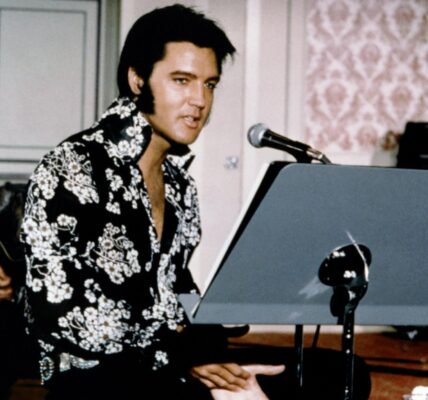Michael Jackson, the undisputed King of Pop, revolutionized the music industry with his unique sound and unparalleled artistry. From his early days with the Jackson 5 to his groundbreaking solo career, Jackson’s music style underwent significant transformations. These changes were influenced by various factors, including personal experiences, social issues, technological advancements, and collaborations with other artists. This article delves into the evolution of Michael Jackson’s music style and the key elements that shaped his iconic sound.
The Jackson 5 Era: A Star is Born
Michael Jackson’s musical journey began in the late 1960s as the lead vocalist of the Jackson 5, a Motown sensation. With hits like “I Want You Back,” “ABC,” and “I’ll Be There,” the Jackson 5’s music was characterized by its upbeat, catchy melodies and infectious rhythms. The group’s sound was heavily influenced by the Motown style, which blended elements of soul, pop, and R&B. As a young prodigy, Michael’s high-pitched, soulful voice and charismatic stage presence quickly made him the star of the group.
Transition to Solo Career: Exploring New Horizons
In the early 1970s, Michael Jackson embarked on his solo career while still being a member of the Jackson 5. His early solo albums, such as “Got to Be There” (1972) and “Ben” (1972), maintained the Motown influence but also showcased his growing versatility. Jackson began experimenting with different genres, including ballads and funk. His hit single “Ben,” a tender ballad about a pet rat, displayed his ability to convey deep emotion through his music.
The Quincy Jones Collaboration: A Sonic Revolution
The late 1970s marked a turning point in Michael Jackson’s career when he collaborated with legendary producer Quincy Jones. Their partnership began with the album “Off the Wall” (1979), which combined elements of disco, funk, pop, and rock. This album produced timeless hits like “Don’t Stop ‘Til You Get Enough” and “Rock with You.” Jackson’s music became more sophisticated, with intricate arrangements and innovative production techniques.
The success of “Off the Wall” set the stage for their next collaboration, “Thriller” (1982), which became the best-selling album of all time. “Thriller” was a genre-defying masterpiece that included pop, rock, funk, and R&B tracks. Songs like “Billie Jean,” “Beat It,” and “Thriller” showcased Jackson’s ability to blend different styles seamlessly. The album’s groundbreaking music videos and Jackson’s mesmerizing dance moves further solidified his status as a global icon.
Social Consciousness and Personal Struggles: Reflecting Through Music
As Michael Jackson’s career progressed, his music began to reflect his growing social consciousness and personal struggles. The album “Bad” (1987) continued to push musical boundaries with its mix of rock, pop, and dance tracks. Songs like “Man in the Mirror” and “Leave Me Alone” addressed social issues and his own experiences with fame and media scrutiny.
In the 1990s, Jackson’s music took on a more introspective and mature tone. Albums like “Dangerous” (1991) and “HIStory: Past, Present and Future, Book I” (1995) featured socially conscious themes, addressing topics such as racial equality, environmental issues, and child welfare. The song “Earth Song” from “HIStory” highlighted his concern for the planet, while “They Don’t Care About Us” spoke out against injustice and oppression.
Technological Advancements and Collaborations: Embracing Innovation
Throughout his career, Michael Jackson was known for embracing technological advancements and collaborating with other artists to stay ahead of the curve. The “Dangerous” album incorporated cutting-edge production techniques, including the use of digital instruments and samples. Jackson worked with producers like Teddy Riley, who introduced the new jack swing sound to his music.
Collaborations with artists from various genres also influenced Jackson’s style. His duet with Paul McCartney, “The Girl Is Mine,” and his collaboration with Eddie Van Halen on “Beat It” exemplified his willingness to explore new musical territories. Jackson’s work with younger artists, such as his collaboration with Janet Jackson on “Scream,” kept his music relevant to new generations of listeners.
Legacy and Impact: The Enduring Influence of Michael Jackson
Michael Jackson’s influence on the music industry is immeasurable. His ability to innovate and adapt to changing musical landscapes set him apart as a true pioneer. From the Motown era to his genre-defining solo career, Jackson continuously evolved his sound while maintaining his signature style. His contributions to music, dance, and visual arts have left an indelible mark on popular culture.
Jackson’s music continues to inspire artists across genres, and his legacy lives on through his timeless hits and groundbreaking performances. His dedication to social causes and his efforts to use his platform for positive change resonate with fans worldwide. Michael Jackson’s musical evolution is a testament to his extraordinary talent, creativity, and enduring impact on the world of music.
Conclusion
Michael Jackson’s journey from a child prodigy to the King of Pop is a story of continuous growth and innovation. His music evolved over the years, shaped by personal experiences, social issues, technological advancements, and collaborations with other artists. Jackson’s ability to blend different genres and push creative boundaries made him a trailblazer in the music industry. As we look back on his illustrious career, it is clear that Michael Jackson’s music will continue to captivate and inspire future generations.



